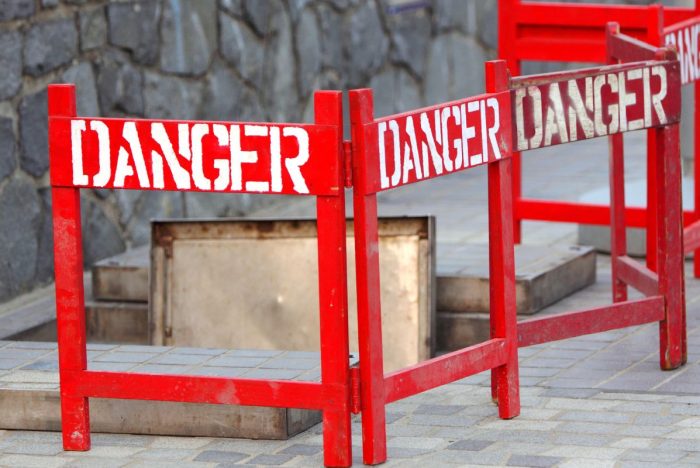
Danger Ahead for Michigan Landowners and Insurers? The Likely Fall of the “Open and Obvious” Defense
For well over two decades, Michigan property owners and insurers facing premises liability claims have had access to a powerful shield when the injured party should have seen and avoided the hazard that led to their injury. Specifically, if the allegedly dangerous condition that led to the injury was “open and obvious,” the landowner was relieved of the duty they otherwise would have to keep their property in a reasonably safe condition.
However, two pending cases before the Michigan Supreme Court raise the distinct possibility that “open and obvious” may no longer be a complete defense to liability, even in cases where the plaintiff’s failure to pay attention to their surroundings is the most proximate cause of their injuries. In Kandil-El Sayed v. F & E Oil, Inc. and Pinsky v. Kroger Co of Michigan, the Court is considering whether the open and obvious doctrine as set forth in Lugo v Ameritech Corp, Inc., 464 Mich 512 (2001) is consistent with Michigan’s comparative negligence framework, and if not, which approach the Court should adopt for analyzing premises liability cases under a comparative negligence framework.
Open and Obvious Dangers Currently Excluded From Property Owners’ Duties
As in any personal injury case, the plaintiff in a Michigan premises liability lawsuit must prove the defendant owed them a duty, the defendant breached that duty, and that breach was the proximate cause of their injuries and losses. In Michigan, the duty owed by a landowner regarding hazards on their property depends largely on who the plaintiff is and how and why they were on the property.
But these duties do not apply to dangers that are “open and obvious.” When a hazard is open and obvious, the duty to avoid the danger and prevent injury shifts from the property owner to the individual who should have seen the danger and taken reasonable steps to avoid it. With no duty owed by the landowner to protect invitees from open and obvious dangers, there is no duty to breach and, thus, no basis for liability. As the Michigan Supreme Court has stated:
“Where the dangers are known to the invitee or are so obvious that the invitee might reasonably be expected to discover them, an invitor owes no duty to protect or warn the invitee unless he should anticipate the harm despite knowledge of it on behalf of the invitee.”
What Makes a Danger “Open and Obvious”?
As the Michigan Supreme Court articulated, “Whether a danger is open and obvious depends on whether it is reasonable to expect that an average person with ordinary intelligence would have discovered the danger upon casual inspection.”
Michigan courts have held that many common conditions are open and obvious, such as large potholes, snow and ice on a sidewalk, puddles of water, and an unmarked step.
However, sometimes, an “open and obvious” danger either creates an unreasonable risk of harm or is unavoidable, such that the landowner still has a duty to, in some manner, remove or otherwise appropriately protect invitees against the danger. These “special aspects” of an open and obvious condition differentiate the risk from typical open and obvious risks to create an unreasonable risk of harm. For example, a small pothole in a parking lot is a common open and obvious risk, but a deep and wide open pit big enough for a car to fall in is not. Similarly, if the hazard, such as a liquid spill, blocks the only exit to a building so an invitee cannot avoid it, the landowner may owe the invitee a duty to protect them from the condition.
Open and Obvious Doctrine v. Comparative Negligence Principles
When a condition is found to be “open and obvious” and does not involve “special aspects” as described above, the open and obvious doctrine essentially acts as a complete bar to recovery. The Court is now considering whether this outcome squares with comparative negligence principles that otherwise govern Michigan personal injury cases.
Comparative negligence, where both the plaintiff and the defendant are culpable with regard to the plaintiff’s injury, may reduce the amount of damages the plaintiff may recover but does not preclude recovery altogether. If applied to an open and obvious danger, comparative negligence would allow a plaintiff to potentially obtain some compensation even though they were at least partially responsible for their injuries because they did not recognize and avoid the hazard.
The Lugo court found no incompatibility between the two constructs because an “open and obvious” analysis focuses “on the objective nature of the condition of the premises at issue, not on the subjective degree of care used by the plaintiff.”
At this time, we anticipate that the Supreme Court will reconsider this conclusion and hold that “open and obvious” is no longer a complete bar to recovery. Rather, there likely will be a comparative fault analysis in such cases, with the plaintiff’s recovery reduced by their percentage of fault as decided by the trier of fact.
We will follow these cases closely and provide an update once the Court issues its decisions. But Michigan property owners and insurers should know they may soon lose what currently is a powerful defense against premises liability claims.
If you have any questions about these impending decisions and their impact, please contact Jesse Roth at Maddin Hauser.
































